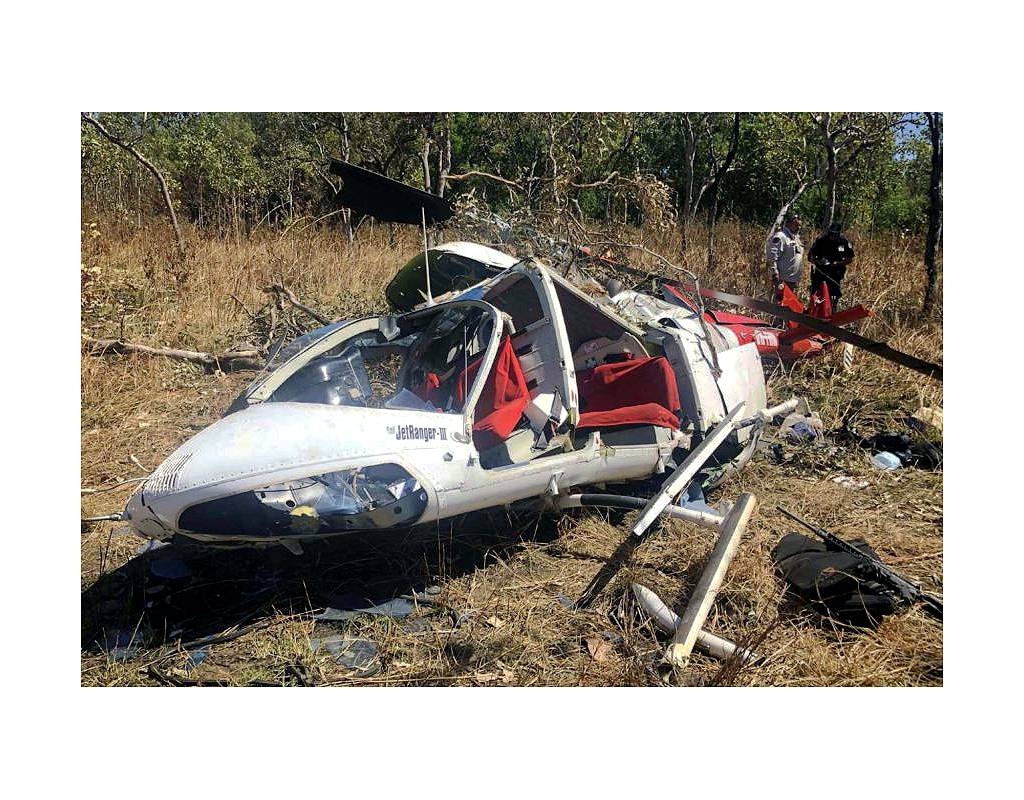
The Australian Transport Safety Bureau’s (ATSB) investigation into the collision with terrain of a Bell JetRanger helicopter during feral animal culling highlights the importance of independent inspections following maintenance and the effective management of risks for low-level aerial shooting operations.
The accident occurred in the Kakadu National Park, Northern Territory on the morning of May 21, 2019 when JetRanger VH-FHW, with a pilot, shooter and spotter on board, was tasked to cull a mob of feral horses. The helicopter was operated by Jayrow Helicopters under contract to the Director of National Parks (DNP), while the shooter and spotter were experienced Kakadu National Park rangers.
The helicopter was at a height of about 50 feet above the ground and over a lightly wooded area when its engine decelerated to idle, the pilot later reported. The spotter later recalled hearing the engine surge.
Ensuring the throttle was fully open (which it was), the pilot quickly diagnosed the situation as a genuine emergency and flew the helicopter towards a small clearing slightly to the left of the nose in their direction of travel. While managing the forward speed and height to reach the clearing, during the forced landing the right side of the helicopter impacted a tree then landed heavily in a level attitude. All three occupants were seriously injured, and the helicopter was destroyed.
The ATSB’s investigation determined that the engine power loss was due to a leak created by a loose union on an engine reference air line. During maintenance four days prior to installing a power turbine governor, the union, which was downstream of the work completed, had not been checked for tightness. An independent inspection following the installation of the governor was probably not conducted, and document verification processes did not detect that the independent inspection had not been recorded.
“This accident highlights that maintenance activities carry risk of error and therefore independent inspections are a vital risk control,” ATSB Director Transport Safety Dr. Mike Walker said.
“Inspections must be designed and conducted in a way that will capture critical issues, and visual inspections will not always be enough.”
The investigation also found that the helicopter’s cabin was not well prepared for the subsequent collision with terrain, with a range of factors exacerbating the occupants’ injuries or increasing risk. For example, the DNP required shooters and spotters to wear helmets, however helmets were not provided or used on a routine basis.
Safety issues were also identified with the ambiguous wording of a Civil Aviation Safety Authority (CASA) instrument permitting the use of harnesses, and CASA’s renewal of aerial platform shooting approvals without recurrent emergency training.
“The ATSB found that the Director of National Parks did not actively manage the risk of the aerial culling task, or effectively supervise the operation,” Dr Walker said.
“This allowed for an increase in the number of crew, a change in helicopter type and change of helicopter operator, which had all progressed without requisite risk management, exposing the crew to avoidable harm.”
Following the accident, the helicopter operator ordered an immediate fleet-wide check of the security of all flexible and rigid reference air lines in its engines and took action to ensure all crew members were aware of the risk associated with using only a harness instead of a seat belt. Additionally, the approved maintenance organization improved the delivery of human factors training for its engineers, contracting an external provider to deliver the course.
“The Civil Aviation Safety Authority has planned action to resolve the ambiguity associated with the instrument permitting harness use, and to require operators to ensure task specialists are trained in normal and emergency procedures,” Dr Walker said.
Following the accident, the DNP suspended its aerial culling activities and in Dec. 2019 commenced an internal review of standards of practice relating to aerial culling and personal protective equipment. The DNP has reaffirmed its requirement for the use of helmets during any future culling activities and has also undertaken a specialist aviation safety review into its aerial culling operation and is conducting an ongoing review of its risk management policy and practice.
“This investigation highlights that any organization that requires staff to engage in high-risk aviation activities should obtain professional advice on task design, actively manage risk, and provide appropriate equipment,” Dr Walker said.
Read the report AO-2019-025: Engine power loss and collision with terrain, Bell 206B3 helicopter, VH-FHW, Jabiru NT on 21 May 2019
This press release was prepared and distributed by Australian Transport Safety Bureau.



